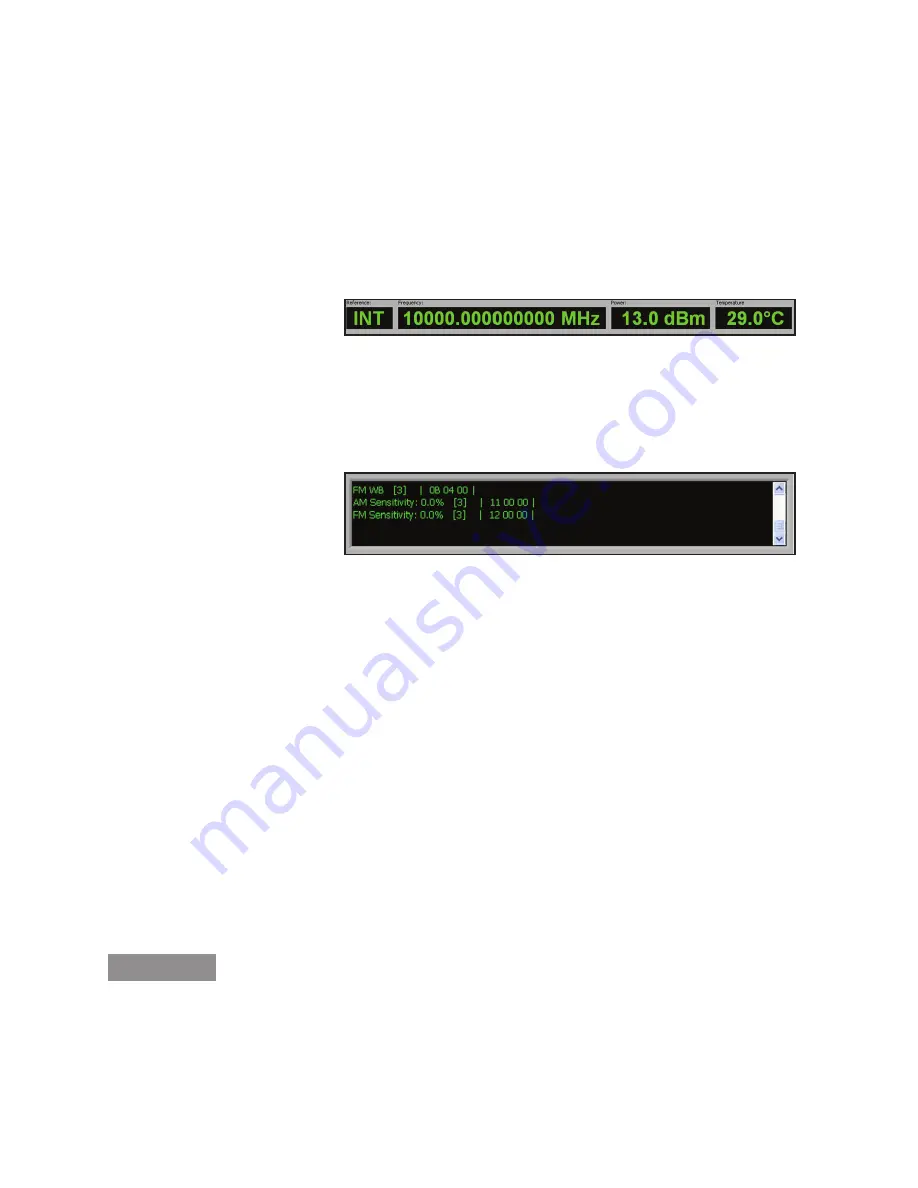
User Guide
QuickSyn Frequency Synthesizer
29 of 44
Reference, Frequency, Power, Temperature
These settings
and status indicators (see Figure 35) located toward the bottom of
the Main Control panel provide an easily visible indication of the
currently selected reference type, frequency, and power. In addition,
the internal temperature of the Synthesizer is displayed. The values
in these indicators will update as settings and temperature change.
Command Window
Located in the lower-left corner of the Main
Control panel is a command window (see Figure 31) that displays
all the commands used during a session and is intended to aid in the
development of programs to control the QuickSyn Synthesizer.
Self Test
The Start Test button will initiate the Synthesizer’s
self-test routine, which will check frequency lock, bias voltage, and
temperature. The indicator above the Start Test button will show
Passed or Failed based on the results of the test. Failed parameters
are listed in a separate popup screen.
Instrument State
The buttons in the lower-right corner of the
Main Control panel enable the user to save, recall, and reset settings.
• When Save as Default is selected, the current reference,
frequency, power, and modulation settings are stored as the new
default settings.
• When Recall Default is selected, the settings previously saved as
default settings are recalled.
• When Set to Factory Default is selected, the Synthesizer’s
factory-defined default settings (see Table 1) are restored,
replacing previously user-defined settings.
Figure 36
Command Window
NOTE
When the Synthesizer is turned on, the instrument state returns to the last saved
state; thus, if no user-defined settings are saved, the factory default settings are used.
Figure 35
Settings and status indicators






























